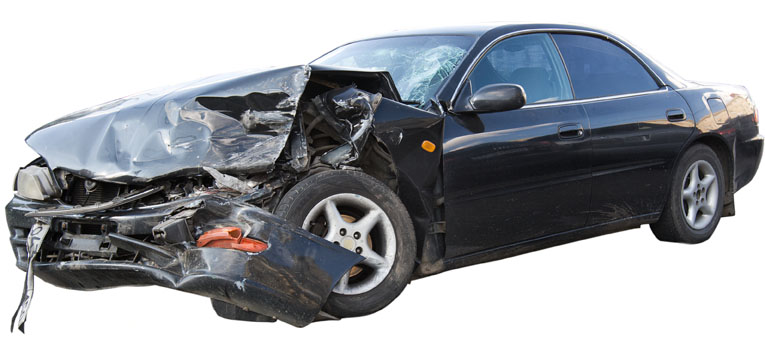 Collision Coverage on Auto Insurance Policy
Collision Coverage on Auto Insurance Policy
The coverage we refer to as Auto Collision Coverage and Comprehensive in your policy are physical damage protections for the damage done to your automobile. This section covers the Auto Collision coverage.
Auto Collision coverage is more appropriately referred to as “Collision or Upset” in the language of the typical auto insurance policy. Collision refers to the damage suffered by your owned auto when the damage is caused by an object or your car in motion. There are exceptions to this generality. When your car strikes a bird, deer, or animal this damage is covered under the Comprehensive coverage. Typical collision damage occurs when your car is struck by another car, by equipment that rolls into your car, or damage done by other moving (inanimate) objects like a shopping cart. Upset means that the vehicle leaves its wheels and ends up on its end, sides or top and this doesn’t have to happen in a collision with another object. I like to explain that Collision or Upset losses usually occur while the vehicle is under operation. A vehicle that rolls into another object without a driver is still collision, however.
It is not mandatory to carry Auto Collision coverage on your insurance policy. Collision is often one of the most expensive parts of your coverage on an auto insurance policy. Auto Collision insurance coverage is damage you claim on a first party basis from your own insurance company. If you have a loan or lease on the vehicle you lender generally requires “full coverage” which means that auto collision damage is covered under your policy along with comprehensive coverage. Collision insurance is always offered with a deductible. What this means is that you are responsible for the damages you incur up to and including the deductible amount. The damages above and beyond the deductible are then the responsibility of the insurance company up to the value of the vehicle. The collision coverage on your policy applies regardless of the fault of the drivers involved. The most common deductibles are $500 and $1,000 for collision these days but depending upon the carrier, higher and lower deductibles may be available. We usually suggest deductibles consistent with your ability to pay. You need to be able to comfortably pay your deductible when there is a loss so some justify paying more premium as a way to afford your deductible. Generally speaking, the higher the deductible the lower the cost of the auto collision coverage on your insurance policy.
Valuation of your damage and your vehicle after a loss is one of the most contentious areas experienced by insurance customers and insurance companies. Unless the vehicle is insured under special terms reserved for vehicles with unique value, or where there are stated limits of coverage, everyday autos are insured with valuation determined according to what is known as “actual cash value.” ACV, as it is known, refers to the depreciated value of a vehicle at the time of loss. Condition may influence the value, as well as the marketplace of values for similar cars in similar condition. All losses where repair is necessary are subject to consideration of the repair as betterment. Betterment violates basic concepts of insurance so some carriers may ask for non-critical components to be repaired with used, reclaimed, or reconditioned parts. It is consistent with industry practice and some carriers give you the choice to opt for new parts rather than used or reclaimed parts for an additional premium. Your auto collision coverage does not have a limit – it is built into the description of the vehicle. Your carrier uses a symbol system that represents the approximate new cost of a vehicle and they then apply aging factors to the car to adjust the cost for physical damage coverage over time as the vehicle declines in value and ages (depreciates with use). These symbols are used by every carrier (in one form or another) and most insurers use similar systems of evaluating cost for insurance cars.
If you have any concern over the value of your car or whether it still makes sense to insure for physical damage coverage, consult with me or consider the value of your car in pricing guides like NADA, Kelley Blue Book, Edmunds, or Consumer Reports car price services.
Auto Insurance Topics
- Bodily Injury & Property Damage Liability
- Uninsured Motorist
- Underinsured Motorists
- Medical Payments
- Collision Coverage
- Comprehensive Coverage
- UMPD Coverage
- Road Service
- Rental Car Coverage
- Gap Insurance
- Other Coverage
- Auto Endorsements
- No Fault Law
- SR22 Filing
- Coverage in Canada
- Coverage in Mexico
- Sample Auto Policy
- Definition of Liability
- Understanding Your Auto Insurance Policy
- Auto Insurance Declaration Page
- Ohio Auto Insurance Quote














